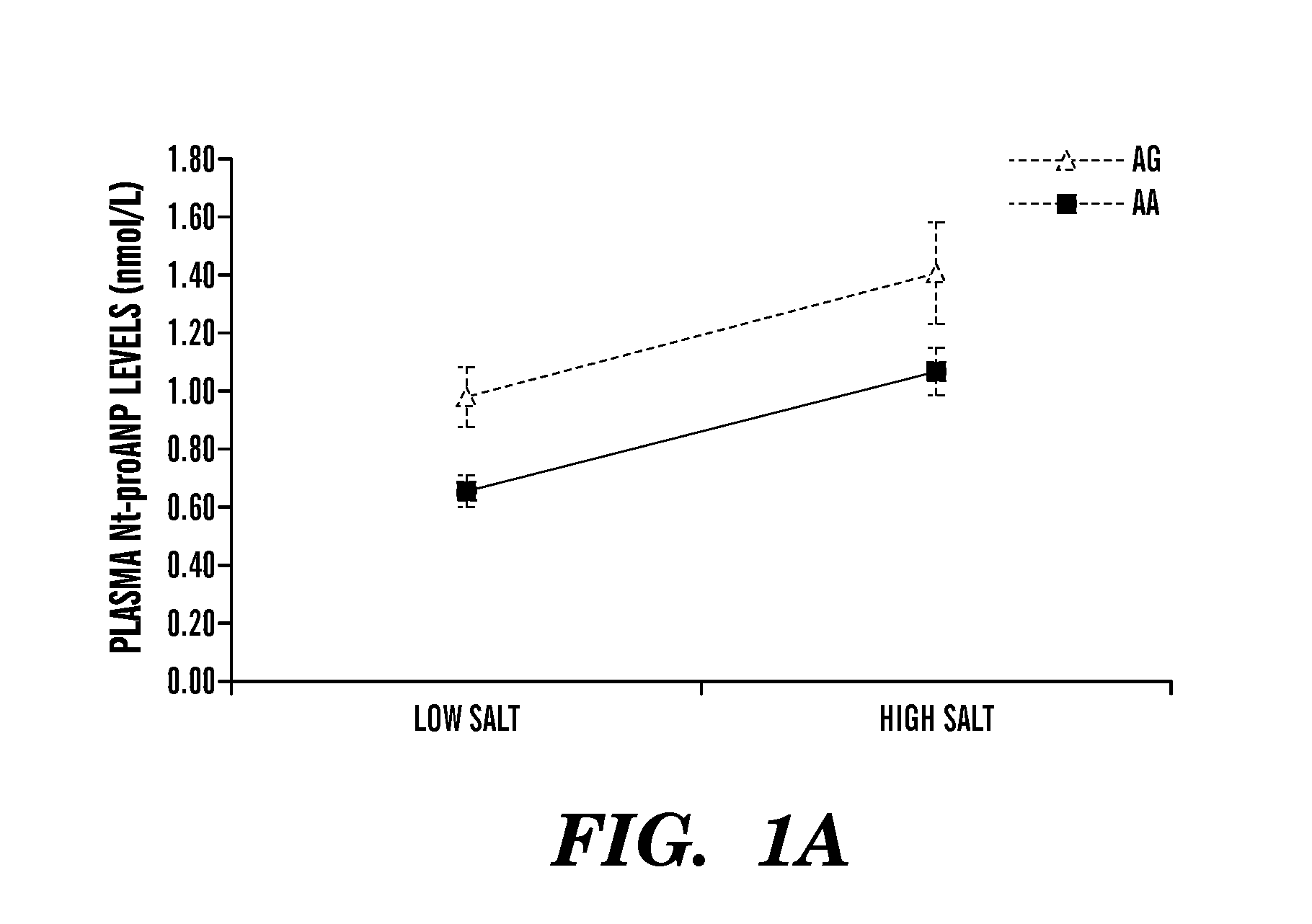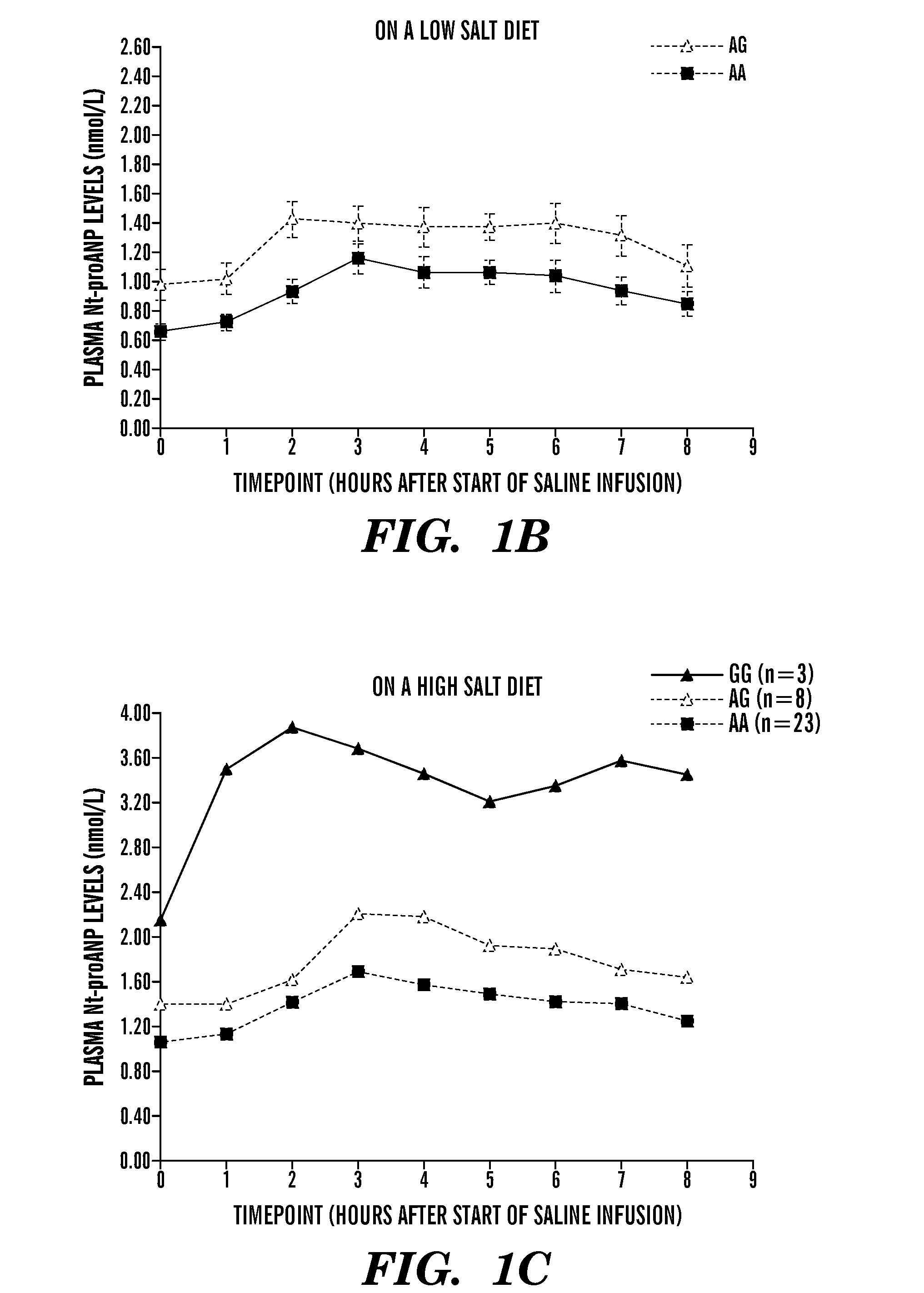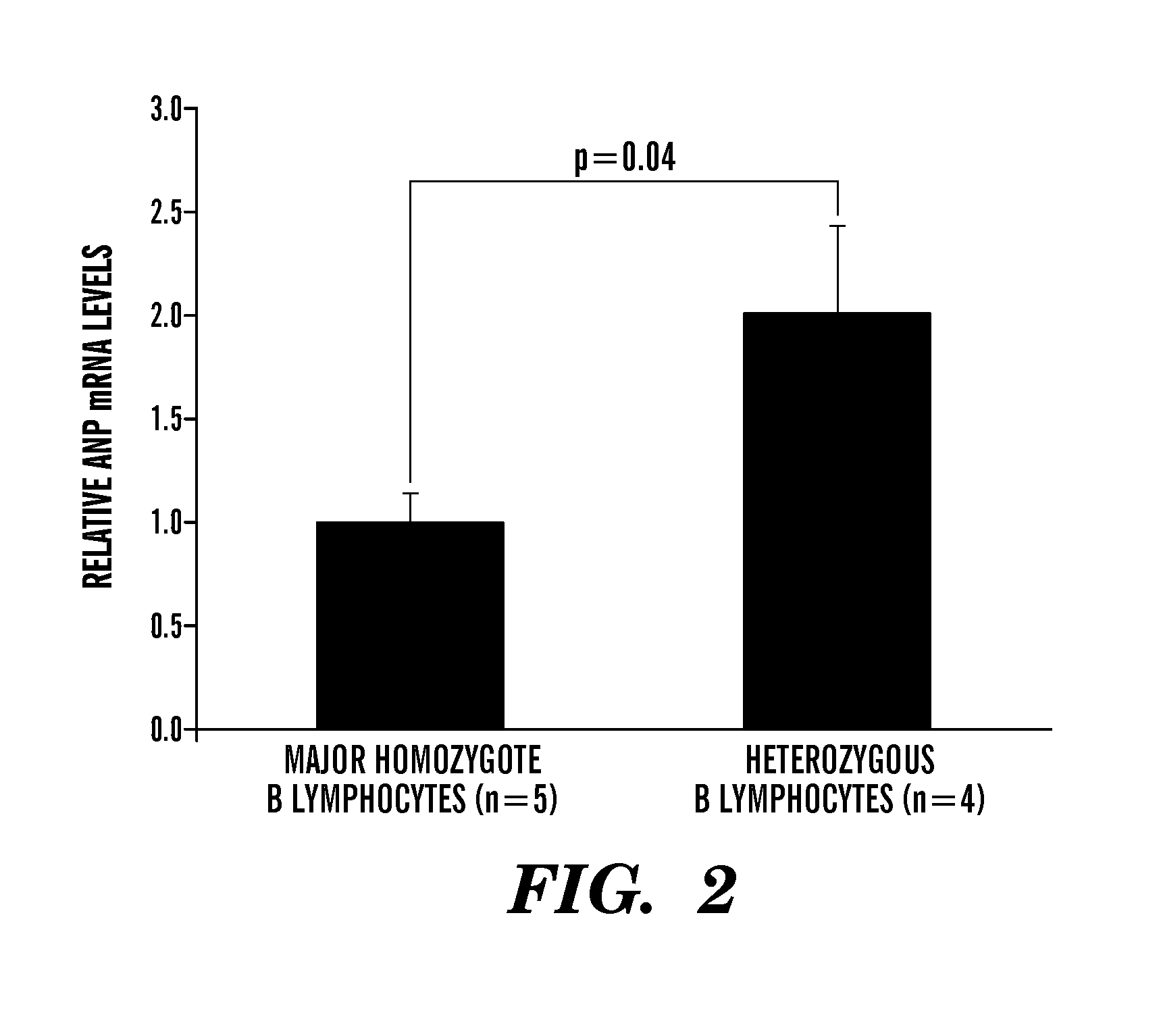Inhibitors of microRNAs that regulate production of atrial natriuretic peptide (ANP) as therapeutics and uses thereof
a technology of atrial natriuretic peptide and inhibitors, which is applied in the field of methods of treating cardiovascular diseases, can solve problems such as difficulty in identifying a causal variant, and achieve the effect of increasing the probability
- Summary
- Abstract
- Description
- Claims
- Application Information
AI Technical Summary
Benefits of technology
Problems solved by technology
Method used
Image
Examples
example 1
[0602]Epidemiologic studies have shown differences in plasma natriuretic peptide concentrations between rs5068 genotypes (5), but these differences were identified in the context of random salt intake and other sources of variation inherent to community-based studies. To minimize this variation and provide mechanistic insights into the association of rs5068 with ANP levels and blood pressure, we undertook a high-resolution physiologic study of healthy subjects who were selected on the basis of their rs5068 genotype and maintained on defined low- and high-salt diets.
[0603]The inventors genotyped the rs5068 variant in 699 healthy, normotensive individuals of European ancestry between the ages of 18 and 40. Overall, 645 (92%) individuals were homozygous for the major A allele (AA), 51 (7%) were heterozygous (AG), and 3 were homozygous for the minor G allele (GG). Accordingly, 54 (8%) had at least one copy of the minor G allele (AG or GG). The inventors enrolled 23 AA individuals and 8 ...
example 2
[0614]To identify an inhibitory miRNA that targets the NPPA rs5068 allele associated with lower plasma ANP levels, miRNA databases (miRanda (11), TargetScan (10) and MicroSNiPer (12)) were screened to generate a list of miRNAs predicted to interact with the NPPA 3′ UTR containing the rs5068 A allele. The inventors identified 3 miRNAs that were predicted to bind at least 7 bases of the NPPA mRNA spanning the rs5068 A allele: miR-425, miR-4770, and miR-196a-3p (FIG. 9). Additionally, 8 other miRNAs that were predicted to bind to the NPPA mRNA spanning the rs5068 A allele were assessed: miR-139 UCUACAGUGCACGUGUCUCCAGU (SEQ ID NO: 51); miR-151 UCGAGGAGCUCACAGUCUAGU (SEQ ID NO: 52); miR-194 UGUAACAGCAACUCCAUGUGGA (SEQ ID NO: 53); miR-125a-3p ACAGGUGAGGUUCUUGGGAGCC (SEQ ID NO: 54); miR-143-3p UGAGAUGAAGCACUGUAGCUC (SEQ ID NO: 55); miR-155 UUAAUGCUAAUCGUGAUAGGGGU (SEQ ID NO: 56); miR-769 UGAGACCUCUGGGUUCUGAGCU (SEQ ID NO: 57); and miR-224 CAAGUCACUAGUGGUUCCGUU (SEQ ID NO: 58). All were pre...
example 3
[0615]To establish that miR-425 was expressed in the human heart, the inventors obtained left atrial and left ventricular tissue from heart transplant donors without cardiovascular disease (n=5 donors). The inventors demonstrated that miR-425 expression was readily detectable in the left atrium and ventricle of human hearts in vivo (FIG. 10).
[0616]As miR-425 transfection was discovered to decrease the transcription from the NPPA gene and thus production of ANP in the presence of the A but not the G allele, the inventors next conducted transfection experiments to assess if endogenous miR-425 regulated the 3′UTR of NPPA. In particular, the inventors used an anti-miR-425 with a binding site for miR-425 (e.g., to function as an inhibitor to miR-425) to assess effect on endogenous NPPA levels. Transfection of the anti-miR-425 led to the opposite pattern induced by miR-425, i.e. increased expression of ANP by the NPPA gene in the presence of the A. but not G allele (FIG. 3B). Accordingly,...
PUM
| Property | Measurement | Unit |
|---|---|---|
| pressure | aaaaa | aaaaa |
| pressure | aaaaa | aaaaa |
| blood pressure | aaaaa | aaaaa |
Abstract
Description
Claims
Application Information
 Login to View More
Login to View More - R&D
- Intellectual Property
- Life Sciences
- Materials
- Tech Scout
- Unparalleled Data Quality
- Higher Quality Content
- 60% Fewer Hallucinations
Browse by: Latest US Patents, China's latest patents, Technical Efficacy Thesaurus, Application Domain, Technology Topic, Popular Technical Reports.
© 2025 PatSnap. All rights reserved.Legal|Privacy policy|Modern Slavery Act Transparency Statement|Sitemap|About US| Contact US: help@patsnap.com



